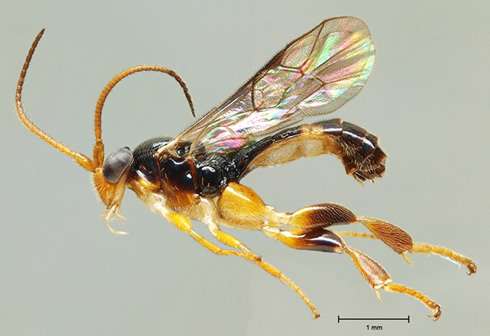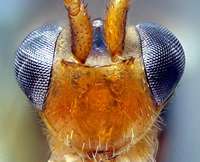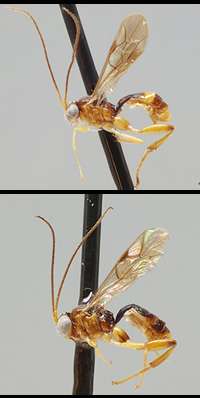Scientists reveal 177 new species of wasps in Central and South America

(Phys.org)—Yesterday there were just 15, but today there are at least 192 species of South and Central American orthocentrine parasitoid wasps, scientists report in the journal Proceedings of the Royal Society B today.
Wasps of the subfamily Orthocentrinae (family Ichneumonidae), which eat their hosts alive, are just a few millimetres long and had mostly been missed from the scientific records for South and Central America.
But a study led by Anu Veijalainen of the University of Turku, Finland, and including the Natural History Museum's ichneumonid wasp expert Gavin Broad, has revealed 177 species that have not yet been described or even named.
This is more than the total number of species recorded for North America (151), where they have been much better studied. It was thought that orthocentrine wasps were more diverse in temperate climates, but this study suggests that's not the case and gives a much more accurate view of global parasitoid wasp biodiversity.
'We now have good evidence that these wasps are very diverse in the tropics and we should take that into account when looking at patterns of biodiversity across the globe,' says Broad.
The team identified the wasps by studying their body forms and characteristics (morphology) of thousands of specimens, and testing the DNA of hundreds of specimens, collected from 27 sites.
Eating their hosts alive
Very little is known about Orthocentrinae wasps except that they feed on the larvae of fungus gnats. They lay their single egg in the body of the host gnat larvae, or maggot. The wasp larva then feeds on the body of the host until it is entirely devoured.
Role in fungus gnat ecosystem?
Finding so many species of this group will reveal more clues about how the wasps interact with other plants and animals, as Broad explains. 'Considering the numbers of these wasps that can be found in forests, they must be playing an important role in the complicated cycle that breaks down dead wood.'

'The fungi break down wood, as well as leaves and other organic debris. The flies eat the fungi and the orthocentrines feed on the flies – there is a complicated and delicate pyramid of interactions supported by the presence of dead wood and leaf litter in the forests.'
Why were they missed?
So, why did they remain hidden from the scientific records for so long? According to Broad, 'This is mainly because there are just not enough people who study the wasp family Ichneumonidae. They have never been a popular group, possibly because there are so many species – entomologists should take up this challenge more enthusiastically!'
Hard to identify?
It helps if you have an expert eye, and also the Museum's collection of about 2 million wasps when beginning to identify species. 'As I have spent many days sorting and identifying Orthocentrinae in our collections from various parts of the world, this made our job of sorting these particular samples much easier.'
Cryptic species
Some species were more tricky to identify, looking virtually identical to each other. These are cryptic species, and the team detected them by DNA analysis.
'We frequently find that when we analyse gene sequences of several individuals, it is obvious that there is more than one species, and that the populations have been separate for millions of years.'
The genetic evidence also gave the team clues to what small variations in appearance help distinguish between different species.

Not all brown
The new wasp species showed surprising variety in their appearance, says Broad. 'It was lovely to see the diversity of colour patterns in these South American orthocentrine species. It wasn't as if we were sorting out innumerable variations of small, brown wasps; there was a huge variety of bright colour patterns in these wasps, most of which are only 3-4mm long.'
Underreported areas
The study highlights that there are areas around the world that are very underreported. Broad explains, 'It's a stark example of the imbalance in taxonomic research where the animals and plants of some regions and groups have been neglected compared to the fauna and flora of the northern, temperate regions.'
Wasp specimens from unexpected places
The specimens used in this study mostly came from work that was aimed at exploring ant and beetle diversity.
Broad concludes, 'It is an important lesson in the value of keeping all of the insects sampled, even if you think nobody is going to work on them.'
As these species are without names, the next step is to give them all detailed scientific descriptions and scientific names, all 177 of them.
Journal information: Proceedings of the Royal Society B
Provided by Natural History Museum



















